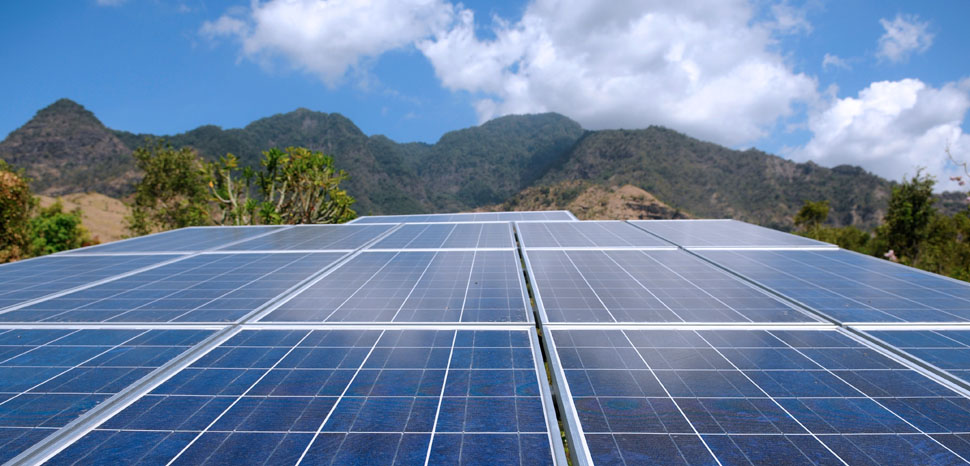Indonesia’s oil reserves will run out in about 10 years, assuming no new reserves are discovered. Natural gas is also estimated to be exhausted in approximately 22 years with existing reserves at 77.3 trillion cubic feet. Meanwhile, coal reserves of 37.6 trillion tonnes will be exhausted within 65 years if exploited at the same scale as today.
Yet it is hard to imagine that in 10 years, motorbikes and cars will end up in garages or along the rivers of Jakarta, Surabaya, Bandung, and other Indonesian metropolises. Of course, this would mean there were no fuel imports. But the far more likely scenario would be that Indonesia is forced to turn to energy imports, as usual, giving rise to new ‘oil mobs’ (mafia migas) and price instability.
To avoid such turmoil, steps and preparations are needed to immediately undertake a national energy transition. The necessity of switching to a cleaner and more sustainable energy model is not only due to the depleting reserves and their economic ill effects, but also because of the level of pollution caused by the various types of energy used in Indonesia today. Such energy is also contributing to the problem of climate change.
The need for an immediate energy transition is not limited to Indonesia. Other countries in the world are also striving to create environmentally friendly energy strategies. As an important note, Indonesia actually has alternative energy capacity which is more sustainable, even abundant. Unfortunately, the level of utilization is still very minimal. In fact, Indonesia is home to large reserves of geothermal energy, solar energy, wind energy, ocean currents, biofuel, nickel as a battery or biofuel, and several other types of potential energy. In other words, Indonesia has renewable energy sources in abundance.
For example, Indonesia’s geothermal energy reserves reach 400 gigawatts (GW), but only 2.5% has been utilized thus far. Likewise for biofuel, Indonesia is rich in palm oil as a raw material. But at present, crude palm oil (CPO) is exploited as an export commodity, which is released in raw form to the global market. Meanwhile, on the other hand, Indonesia imports fuel, which causes the national current account balance to fluctuate every month. Every time the rupiah falls, fuel imports are always the scapegoat.
A mandatory biodiesel program would be very beneficial for Indonesia is realized. On paper, the program would reduce CO2 by 9.88 million kiloliters, reducing greenhouse gas emissions (GHG) by 6.61 million kiloliters. In addition, there will be IDR 2.43 trillion in taxes to be paid to the state, and $2.77 billion in foreign exchange savings.
In fact, the mandatory biodiesel program aims to increase the use of new and renewable energy. The mandatory implementation of biodiesel also helps create jobs in the industrial sector and oil palm plantations. This policy will automatically increase the demand for CPO, help stabilize the price of CPO, and of course, in the end, it will help improve the welfare of oil palm farmers.
For this reason, Indonesians, as active fuel users and first-class cellphone battery wasters, must always encourage the government to prepare for energy transition steps. Thankfully, in the government’s renewable energy roadmap, the capacity for renewable energy power plants is expected to increase from 10,000 megawatts (MW) currently to 32,000 MW in 2030, and 52,300 MW in 2045.
The use of biofuel is planned to increase from around 10 million kiloliters (KL) this year to 20.8 million KL in 2030, reaching 43.2 million KL in 2050. To meet this vast target, an investment of at least $203 billion will be required. This investment will simultaneously be used to meet the target for the portion of renewable energy in the national energy mix, increasing from 9% in 2019 to 23% in 2025, and 32% in 2050.
Due to the necessity for large investments, some of which bring little immediate economic dividend and are high-risk in nature, a government role is needed, particularly in financing. But unfortunately, Indonesia’s central budget is limited. Therefore, Pertamina and PLN, as two energy SOEs, must assume the role of being pioneers in the development of renewable energy in Indonesia. If they are able to spearhead the renewable energy movement and prove successful, private sector players will surely follow.
So far, Pertamina has been quite serious in developing a number of renewable energy projects. The company will develop geothermal energy to the tune of 1.3 GW over the next 3-4 years. Pertamina will also build a solar power plant and a solar cell manufacturing plant. In terms of biodiesel, Pertamina continues to operate a program of mixing 50% of palm oil into fuel oil, known as B50.
The company is also working on a low-calorie coal gasification project into dimethyl ether (DME) to produce cleaner energy and reduce imports of liquefied petroleum gas (LPG). And based on the government’s latest plan, Pertamina is preparing to establish a battery factory for electric vehicles as well as build new battery charging infrastructure.
For all of that, Pertamina is ready to spend $15 billion, with the hope of earning $8 billion in revenue by 2026.
Starting from the awareness of the importance of having a clean energy plan, Indonesians must constantly remind the government to continue to encourage and guard Pertamina, so that it is consistent with prospective steps towards an energy transition. Not only for business purposes, but also for the benefit of the availability of substitute energy at a reasonable price for the Indonesian people.
For the government, the main task is to improve the regulatory framework in order to support the acceleration of a transition toward renewable energy, including the various kinds of incentives needed. Then, prepare a special institution that deals specifically with renewable energy. And last but not least, prepare alternative sources of financing so as to not depend on the state budget, considering that renewable energy investment requires significant financing inflows.
The problem today is that the price of renewable energy electricity can be relatively expensive, making it difficult to compete with other sources of electricity supply. It is this electricity price gap that makes negotiations for the power purchase agreement (PPA) drag on.
Another problem is the matter of land requirements. For example, a large-capacity solar power plant requires one hectare of land per MW generated. Geothermal reserves on the other hand are often located in protected forests or nature reserves, so they are prohibited from being exploited. And what is no less complicated is the problem of financing, given the relatively lower yields of renewable energy vis-à-vis polluting alternatives.
But whatever the obstacles are, given the short time Indonesia has, the government must strive to find a solution. Indonesia still has to seriously prepare for the development of a renewable energy program. The challenge is indeed not easy. Biodiesel, for instance, brings the problem of the distribution chain, namely the limited fleet of vessels able to carry biodiesel. Other challenges include upgrading technology, nurturing highly skilled human resources, and the potential disruptions of the global market.
Yet despite all this, on paper, the targets set for renewable energy are very achievable in the not-too-distant future thanks to Indonesia’s large endowment of land, favorable climate, abundance of renewable energy sources, large and experienced workforce, and qualified experts and technology. But in practice, Indonesia’s transition toward renewable energy will inevitably be much more fraught than what’s in the government’s working paper.
The views expressed in this article are those of the authors alone and do not necessarily reflect those of Geopoliticalmonitor.com




